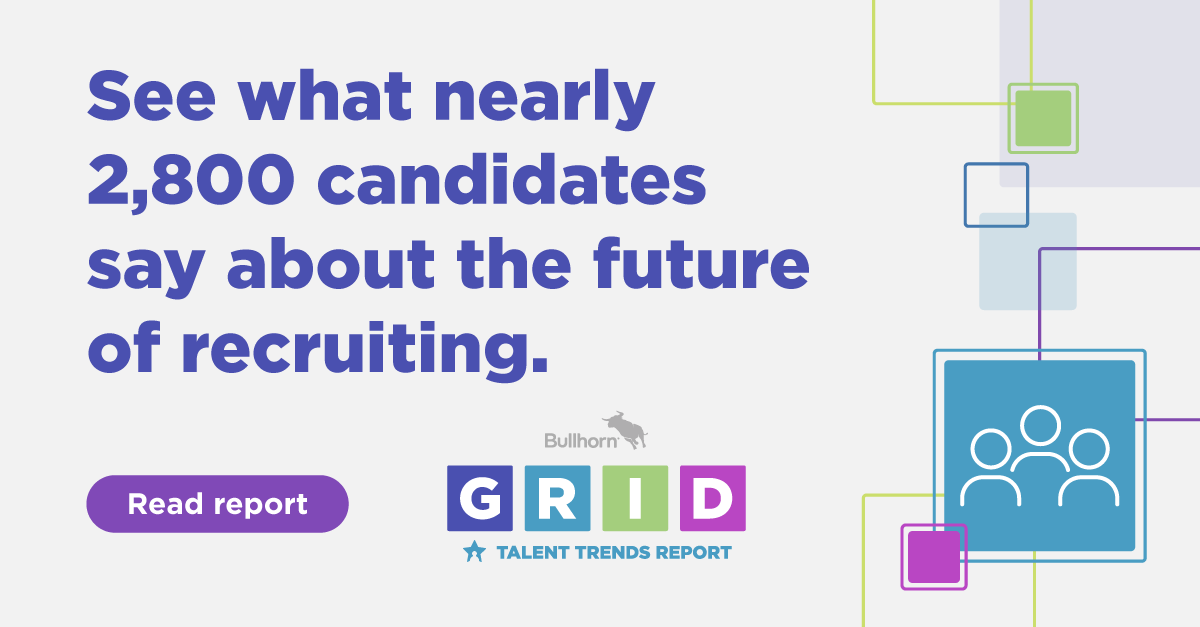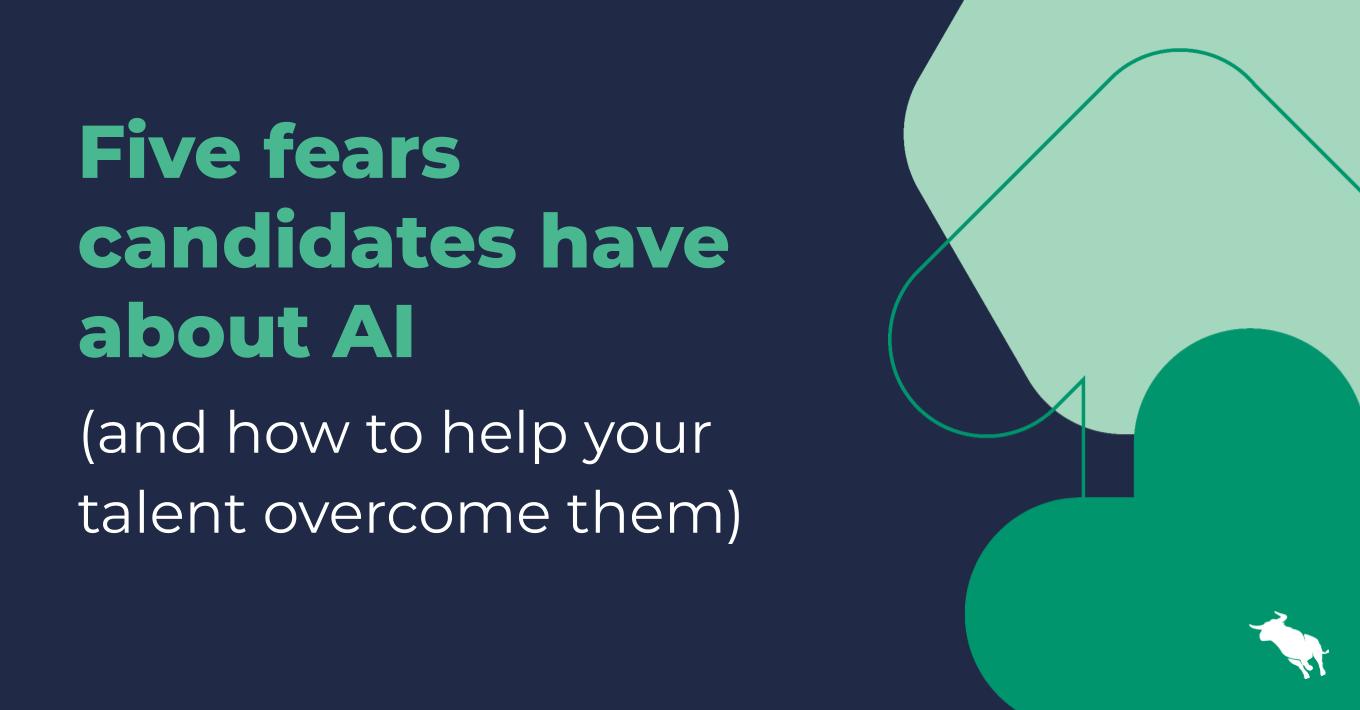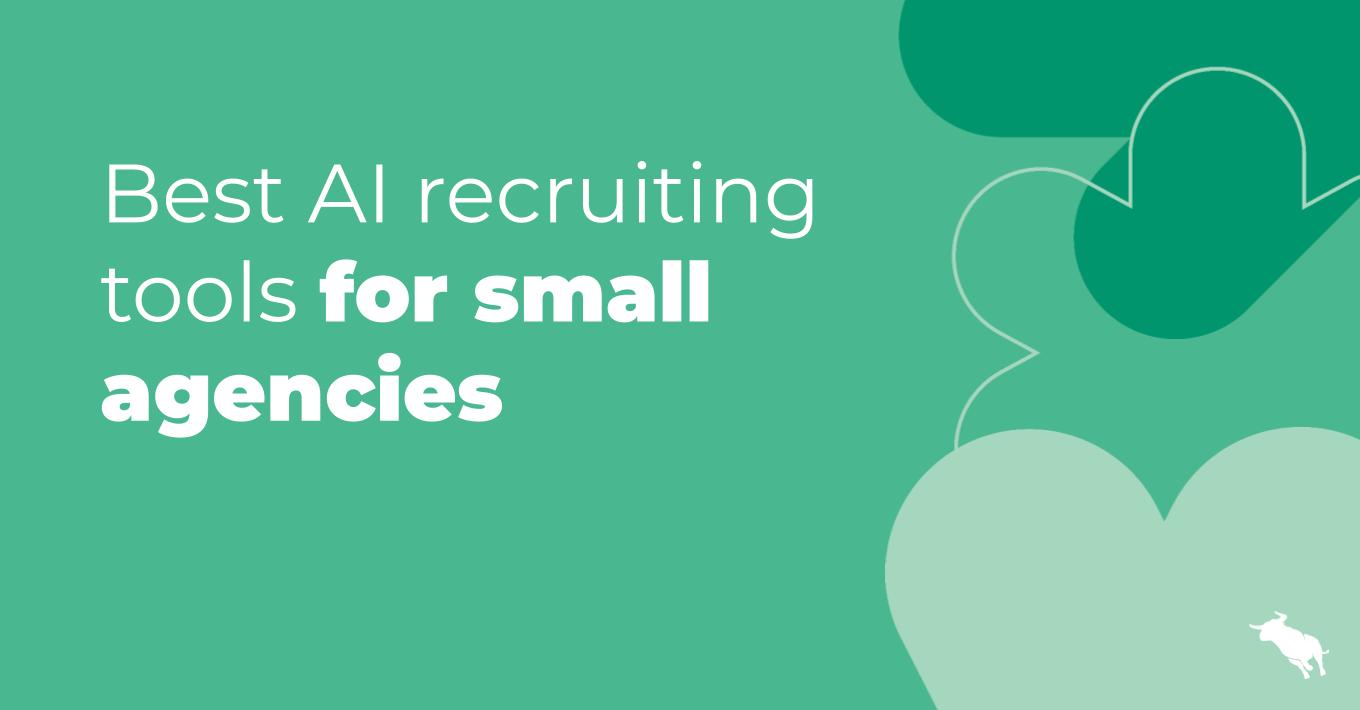How to build a tech stack that drives results
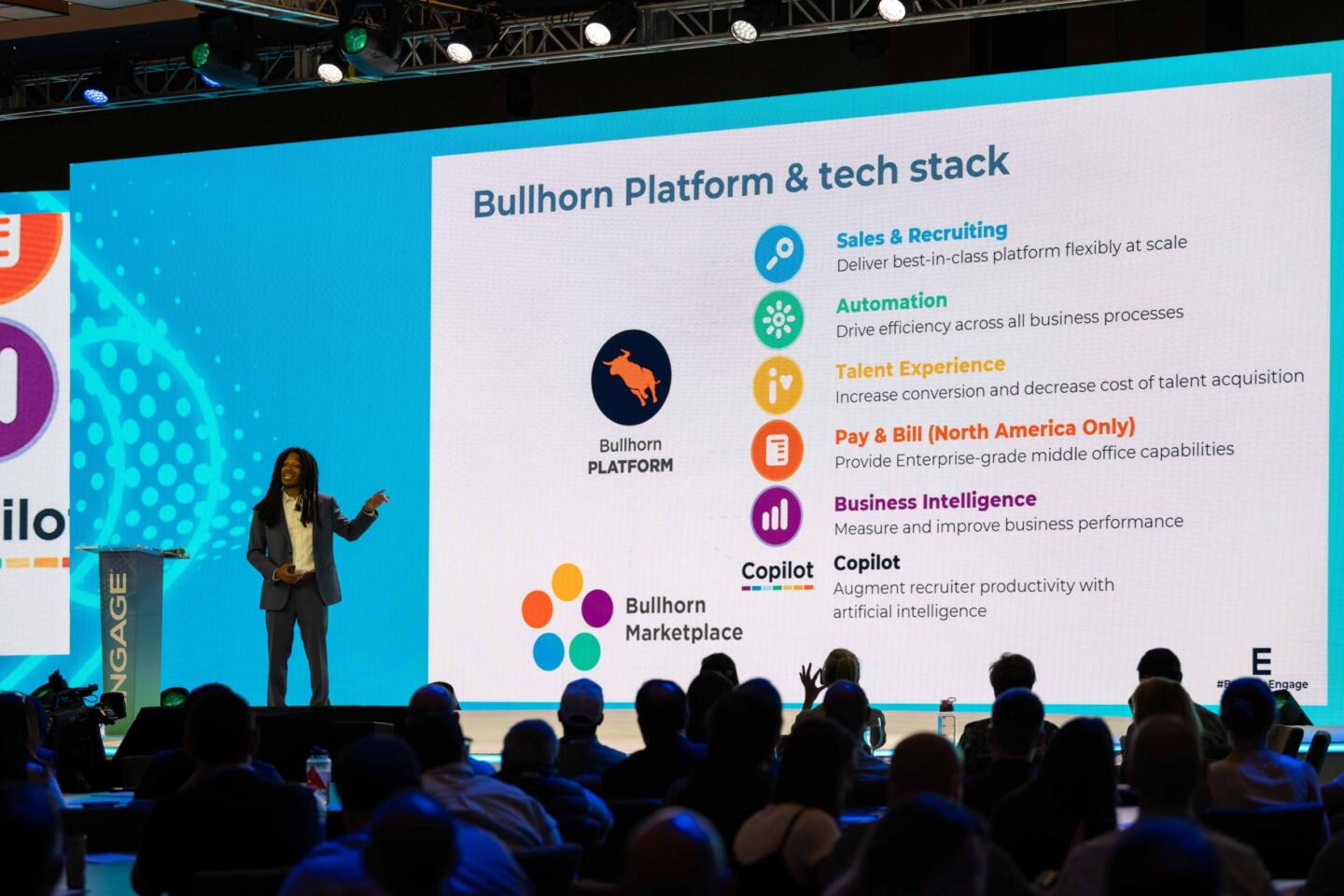
When it comes to building your tech stack, there is no one-size-fits-all. Every agency is different – in size, in vertical, in geography. The right tech stack is the one that suits your business and its needs.
That’s why the Bullhorn platform provides you with options. We aim to make it easy for you to grow, change, and innovate. As such, we have built Bullhorn to support an open ecosystem with the Bullhorn Marketplace so you can plug and play the right solutions for your team. Bullhorn’s goal is to provide an easy path for recruitment agencies to innovate and grow with the latest and greatest technology. Eight years ago, the Bullhorn Marketplace had less than 30 partners. Since then, it’s grown to over 120 partners.
But how do you evaluate, choose, and implement the right stack for your agency? During Engage Boston, Bullhorn Solution Consulting Manager and tech stack expert Chislon Richardson shared his framework for building a tech stack that drives results – built on his years of experience working with real recruitment agencies as they navigated the technology decision process.
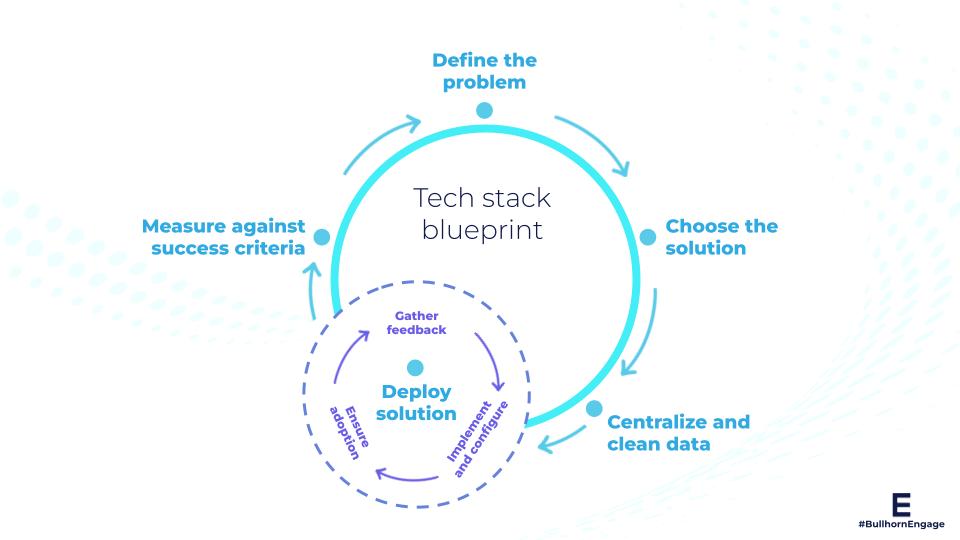
For more insights, blueprints, and best practices, check out our Engage Boston Content Hub.
Define the problem
Building the right tech stack all begins with defining the problem. “This is the most important step, and that’s why it’s at the top of the blueprint,” Richardson said. Without defining the problem and trying to understand what you are solving, it’s nearly impossible to choose the right solution for that problem. “When defining the problem, ask yourself and your team tough questions,” Richardson added.
Don’t just stop at the surface. Is this pain the problem or simply a symptom? Is there a deeper or more compounded problem? “When I work with customers, far too often, they’re not necessarily trying to solve a problem, but adding a new thing to their repertoire,” Richardson said. “They haven’t taken the time to define, ‘What am I actually solving?’”
When you do define that problem, the next step is to tie it to a constituent.
Connect to a constituent
Unlike most traditional businesses, recruitment agencies have to serve multiple constituents. While other companies can stand to focus solely on their customers, recruitment agencies have to consider clients, talent, and internal teams. Tying the problem to one of these constituents allows you to anchor your inspiration and grow buy-in within the organisation.
Connect to a KPI baseline
Once you know the problem you’re trying to solve and the constituent that you’re solving for, you’re ready to connect your goals toward a baseline KPI.
Here are a few sample KPIs you can use, depending on which constituent you’re connecting to:
- Your clients: NPS scores, customer tenure, fill rate
- Your talent: Database utilization rate, redeployment rate, referrals
- Your team: Lead conversion, employee turnover, bottom line
Many of these KPIs may be useful for multiple constituents and multiple problems. But by baselining to a KPI, at this point, you have a clear understanding of where you’re starting and where you hope to go.
Choose the solution
Now, you’re ready to evaluate and choose a solution. You’ll want to be intentional in tackling that evaluation. The first thing you want to consider is using an impact-to-effort matrix. You can use this matrix as a tiebreaker if you’re considering multiple solutions.
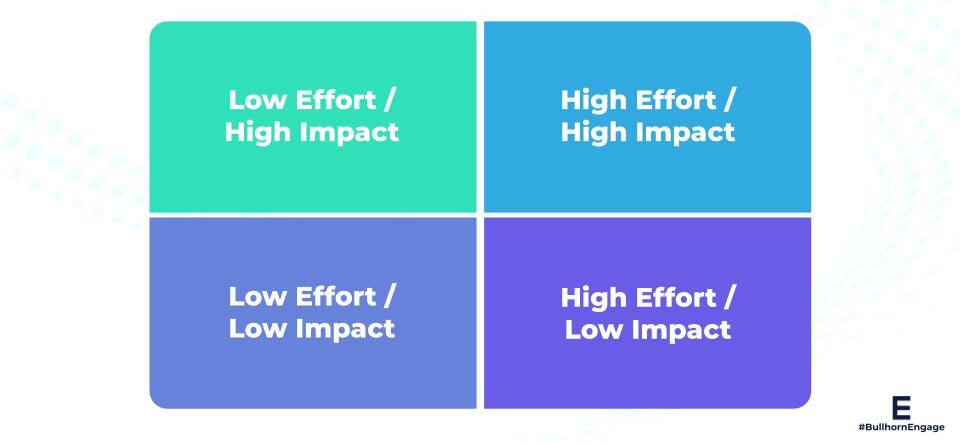
Taking your time in the selection process will increase your chances of adoption. Other common pitfalls Richardson highlighted include:
- Having no clear vision for the end-state solution
- Choosing based solely on price
- Experiencing decision fatigue
To move past these pitfalls, Richardson suggested a few of these steps for success:
- Building a review committee
- Appointing an executive sponsor
- Defining the ideal state and breaking that down into requirements
- Establishing a clear roadmap for your project and sharing this roadmap with your partners
- Considering how the solution fits into your existing workflows
- Finding comparable referrals/case studies
Centralise and clean data
Next, you’ll probably want to go right to deploying the solution. But, said Richardson, “That is a common mistake that I see with agencies that I work with.” Centralising and cleaning the data is a critical bridge between choosing and deploying your solution. “High-quality data is always key in digital transformation,” Richardson said. Without understanding the data that will be impacted by the tool – or subsequently result from your solution – “you’re pretty much going to be dead in the water before you even start using said tool.”
A few common pitfalls Richardson has seen when cleaning data include:
- Duplication and poor data governance
- Outdated information and irrelevancy
- Short-term thinking and belief in a quick fix
Here’s how you can navigate around those pitfalls and clean your data quickly and efficiently:
- Build a glossary of key data points, review it on a regular cadence
- Define stale data in terms of your business
- Determine which data will be impactful to this specific problem and solution
Plus, take a look at our data hygiene guide for more tips and tricks.
Deploy the solution
Now, you’re ready to deploy your solution. “One common mistake that I hear here,” said Richardson, “is thinking of deploying the solution as a linear journey. You start here, and you end there. ”
Instead, Richardson advised, you should be thinking of deploying your solution as an iterative process where you might go through multiple loops of implementing and configuring, ensuring or measuring adoption, gathering feedback, and determining whether or not you need to do another lap or on the track.
Let’s break down each of these steps.
Implement and configure
Implementation lays the groundwork for success, said Richardson. As such, you should build a plan, allocate enough resources, and ask for references from those who have recently gone live so you can get real-life pointers. Richardson warns against a few common missteps, like working on an unrealistic timeline, not having a contingency plan, and forgetting your KPIs.
Above all, during this stage, always keep in mind your initial goals and vision and continue to use them as your North Star.
Ensure adoption
You’ve gone through all the work to choose and implement the right solution for your business – so you want your team to use it and get the most out of it. This step is often where agencies struggle; to ensure success, ensure you’re answering the “why” for your team. Lead with what’s in it for them, provide relevant training and documentation, and create a measurement process.
This step is also where you can lean on your test group and activate them as solution champions. Keep communicating with your team, and ensure your training is ongoing instead of treating it as a one-time event. Finally, don’t expect immediate success. Adoption takes time! Provide the support your team needs and meet them where they’re at.
Gather feedback
It’s okay if you don’t get implementation and adoption right on the first try. Multiple rounds of feedback can help you pinpoint weak areas and find places to improve. When gathering feedback, be systematic in surveying, reviewing, and ranking – and be proactive. Feedback likely won’t be volunteered unless you ask for it. Remember, feedback isn’t a detraction. Once you receive it, adjust accordingly.
When exiting the deploying loop, ask yourself if you’re happy with the feedback you received and are okay with your adoption levels. If not, repeat the loop as many times as needed. “There is no perfect timeline here,” Richardson said. “This could take 48 hours, ten weeks, or 18 months.”
Measure against success criteria
This stage is all about remembering your “why.” Why did you embark on this journey in the first place? Some common places I see customers fall here is getting to this stage and having unrealistic, immeasurable, or ambiguous criteria – or measuring those criteria, not being happy with the results, and pivoting too quickly,” said Richardson.
Your success criteria should be tied to the problem you defined at the start and the KPIs you identified as the most important measures. As you determine your success criteria, consider whether or not it’s quantitative or qualitative. Is it measurable by numbers and doing math, or is it something that we need to survey the team on? As you consider those metrics, determine whether or not this is going to impact short-term or long-term ROI.
Ultimately, technology will continue to innovate, and you are not too late to start building your tech stack. But when you do start, prioritise proven integrations and take advantage of your platform doing the legwork for you. And remember to have a plan from start to finish.

